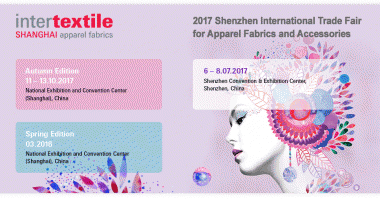ITM auf der TECHTEXTIL und TEXPROCESS 2017
Textilforscher der TU Dresden präsentieren neue Bandwebtechnik zur Herstellung hochkomplexer 3D-Gewebe, Struktur- und Prozesssimulationen für textile Hochleistungswerkstoffe und Fertigungsprozesse sowie eine dreidimensionale thermoaktive Raumtextilie.
Auf Basis einer neuen Spulenschützenbandwebtechnik mit einer integrierten Schützenwechseleinrichtung ist es gelungen, Carbongarne schädigungsarm zu verarbeiten sowie Profilbandgewebe mit über die Bauteillänge unterschiedlichem Querschnitt und vor allem in einem einzigen Fertigungsschritt gewebte komplexe rohrförmige Knotenelemente zu entwickeln. Das entwickelte Schützenwechselsystem demonstriert das ITM auf seinem Stand auf der Messe TECHTEXTIL an einem elektronisch gesteuerten Spulenschützen-Bandwebautomaten . Die Kombination der Spulenschützen-Bandwebtechnik mit der Jacquardtechnik ermöglicht eine ausgesprochen hohe Strukturvielfalt, die für die Entwicklung von gewebten rohrförmigen Knotenelementen in unterschiedlichster Geometrie genutzt wird. Die Rohrknotenelemente werden vor allem für die Eckverbinder von Leichtbaurahmen, z. B. in Fahrzeug- oder Fahrradrahmen, in Sportgeräten oder Roboterwerkzeugrahmen oder in der Architektur, benötigt. Am ITM wird in enger Zusammenarbeit mit der Firma MAGEBA Textilmaschinen GmbH & Co KG und durch die finanzielle Förderung von Forschungsprojekten durch das BMWi die gesamte Prozesskette vom CAD-Entwurf, über die strukturelle Entwicklung, die Erstellung der Maschinensteuerprogramme, die textiltechnische Umsetzung und die Bauteilkonsolidierung erfolgreich erarbeitet.
Als weiteres Highlight präsentiert das ITM der TU Dresden auf der TECHTEXTIL die vielfältigen Möglichkeiten, die die Struktur- und Prozesssimulation textiler Hochleistungswerkstoffe und textiler Fertigungsprozesse bietet und somit fester Bestandteil in allen Entwicklungen entlang der gesamten textilen Wertschöpfungskette vom Atom bis zum Produkt am ITM ist. Darüber hinaus offeriert das ITM als weiteren besonderen Blickfang ein 2,5 Meter hohes Rotorblatt aus einem Faserkunststoffverbund mit integrierten textilen Dehnungssensoren aus Carbonfasern zur In-Situ Strukturüberwachung.
TU Dresden, Techtextil, Texprocess, ITM
Technische Universität Dresden








